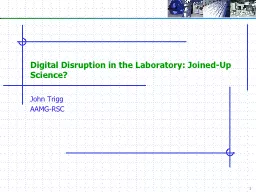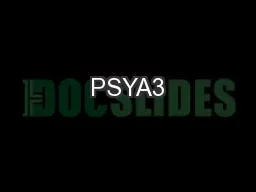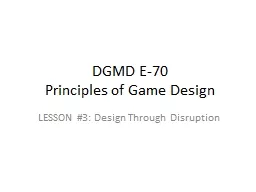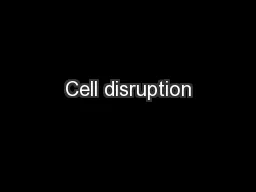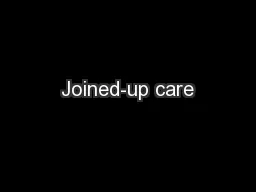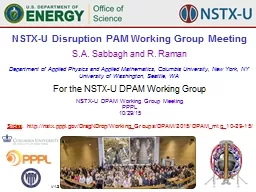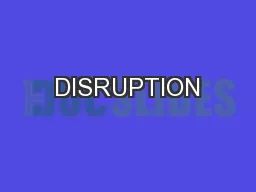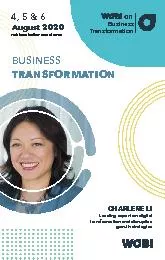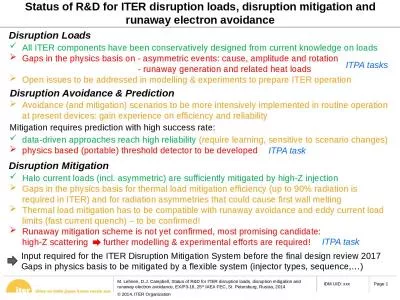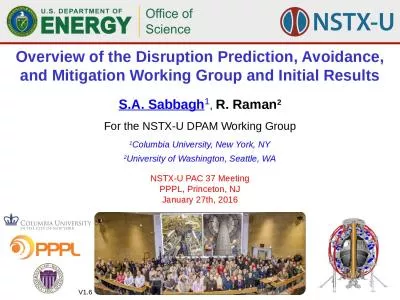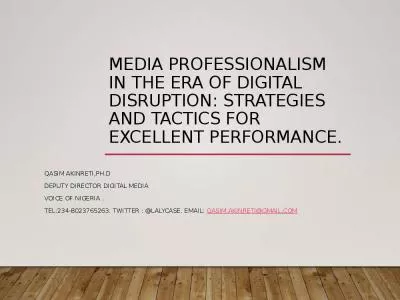PPT-Digital Disruption in the Laboratory: Joined-Up Science?
Author : natalia-silvester | Published Date : 2017-04-06
John Trigg AAMGRSC Then Then and Now Evolution of digital technologies User experience Fixed character cell gt GUI gt Gesturebased Connectivity Central system
Presentation Embed Code
Download Presentation
Download Presentation The PPT/PDF document "Digital Disruption in the Laboratory: Jo..." is the property of its rightful owner. Permission is granted to download and print the materials on this website for personal, non-commercial use only, and to display it on your personal computer provided you do not modify the materials and that you retain all copyright notices contained in the materials. By downloading content from our website, you accept the terms of this agreement.
Digital Disruption in the Laboratory: Joined-Up Science?: Transcript
Download Rules Of Document
"Digital Disruption in the Laboratory: Joined-Up Science?"The content belongs to its owner. You may download and print it for personal use, without modification, and keep all copyright notices. By downloading, you agree to these terms.
Related Documents

